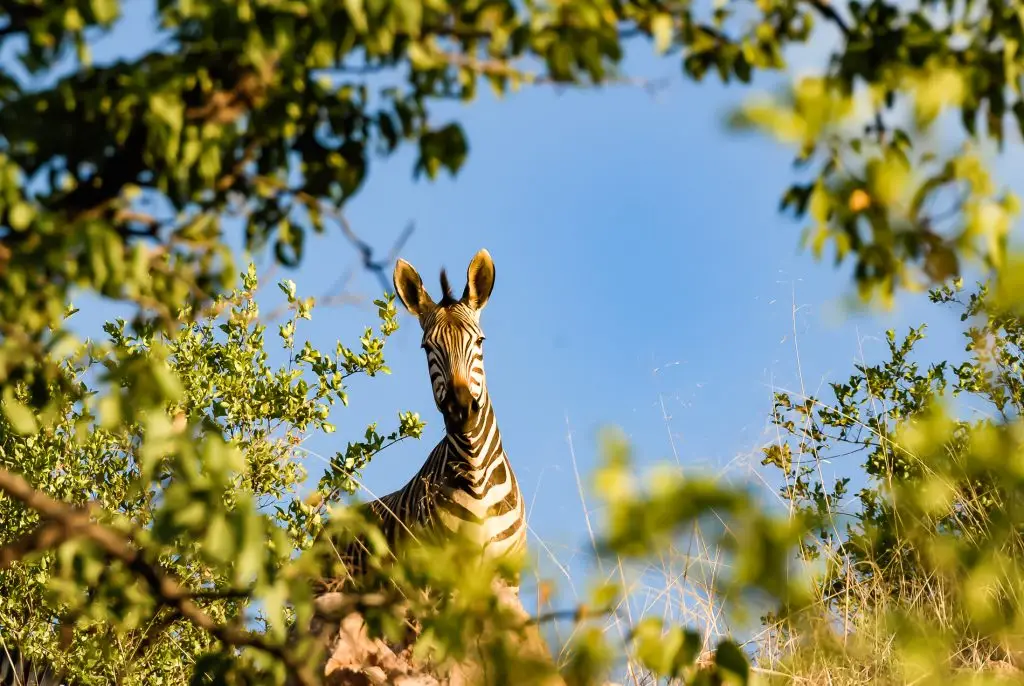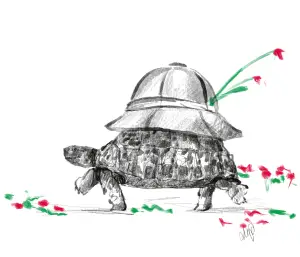Metallic and melodic, yet resoundingly inconspicuous… In the heart of Namibia’s acacia savanna, the petite Barred Wren-Warbler proudly proclaims its presence, a not-so-hidden secret of this land. As a Southwester, or more precisely, a Namibian today, the bird’s metallic serenade often becomes an unconscious part of daily life. A quick glimpse at the thorny branches, and most give up the quest to spot the source of the melodic calls.
Much like the wren, it graces our view for a brief moment, allowing us to savor its existence before it vanishes. Hence, the Namibian variant affectionately bears the English moniker “Wren-Warbler.” However, the Damara cisticola, Calamonastes fasciolatus, shares little in common with the wren; it belongs to the cisticola family instead.
While this little banded singer is not an uncommon sight, it poses a challenge for the avid photographer. So, on your next journey with us, set aside a piece of your morning for birdwatching and acquaint yourself with this unassuming “zebra” of the avian world. Yes, the bird boasts stripes, thus the name fasciolatus, and under closer scrutiny, you’ll unveil its genuine beauty. But why the stripes, you might wonder? Could it be for camouflage? One could say it has certainly mastered that art!
Let’s talk big Game.
I’m often asked why zebras have stripes. No one can provide a definitive answer to this question, but science continually strives to find explanations.
Stripes for Recognition and Differentiation:
This theory is highly unlikely because many other unstriped equines and other herd animals have no problem recognizing each other, finding their mothers, and rejoining their herds.
The Optical Orgasm:
Zebras like to move their heads up and down. Anyone who has been with us among the herds of Etosha will have noticed this. The black-and-white contrast probably stimulates the human eye, leading to the release of serotonin, although this hasn’t been scientifically proven in zebras yet.
Camouflage
Environmental camouflage cannot be the reason since zebras rarely stay under trees and could use the shade-light effect. Herd camouflage is also unlikely because lions and hyenas have poor vision, and zebras tend to scatter when attacked rather than staying in a herd. Furthermore, lions have no trouble catching zebras and devouring many of them.
Optical Size Illusion
Estimating the distance and size of a striped object is believed to be more difficult than that of a single-colored object. This would make the pursuer “err” and reduce hunting success. Well, reality proves the opposite.
Thermoregulation
Africa is hot! Zebras need to eat much more for digestion compared to ruminants and spend more time in the sun. So, no midday nap under a Mopane tree. Africa can be cold! This is especially uncomfortable for foals and drains their energy. Given that zebras have black fur, yes, zebras are actually white-striped and would be uniformly dark if shaved, and the black hairs are significantly longer, especially in young animals, and stand upright in the morning, presumably to absorb heat, one can believe this theory. Scientists have provided evidence through measurements that there are small air currents on the fur due to the logical temperature differences between the stripes. This enhances the evaporation effect (zebras do sweat), thus cooling the zebra down. There are supposed to be fewer fat cells under the white stripes, so less heat storage? In warmer regions with stronger sun exposure, zebras tend to have more pronounced striping.
Insect Protection
Insects, especially horseflies, are believed to have problems landing on striped surfaces, and this has been confirmed. Indeed, comparisons have shown that striped animals are much less likely to be “buzzed” by insects than single-colored animals. Zebras are vulnerable to horseflies, tsetse flies, mosquitoes, and the like due to their relatively thin fur. Although no zebra blood could be detected in examined tsetse flies, one can still believe in this theory to some extent.
So, we don’t know why zebras wear pajamas, but it could certainly be various reasons or a combination of them.
By the way, in their evolutionary development, horses are likely subordinate to zebras. …one rides less frequently nowadays since horses are dangerous from the front, dangerous from the back, and uncomfortable in the middle. :-)


bis bald,
albert
Last Updated on 4. June 2024 by Albert Voigts von Schütz






1 Comment